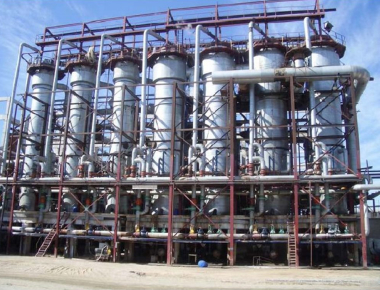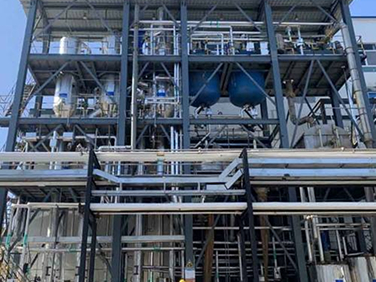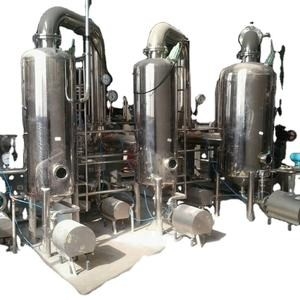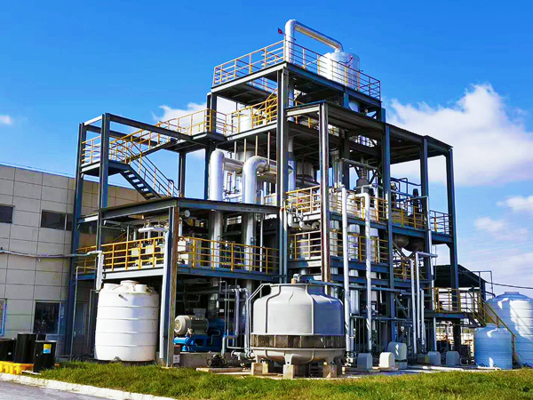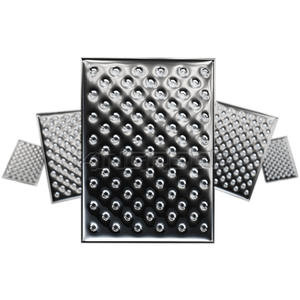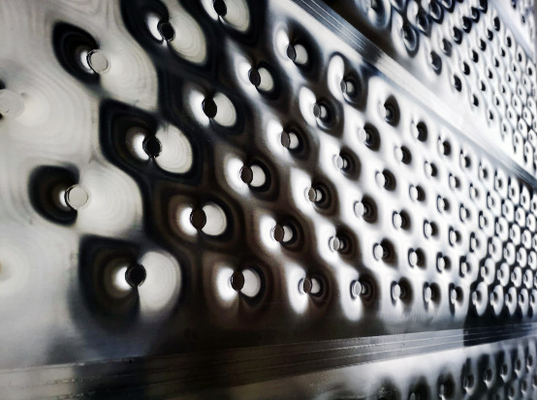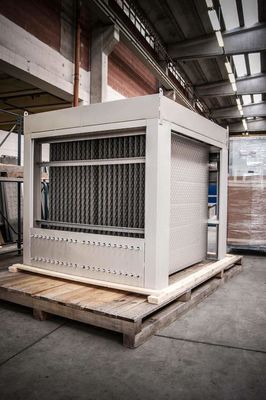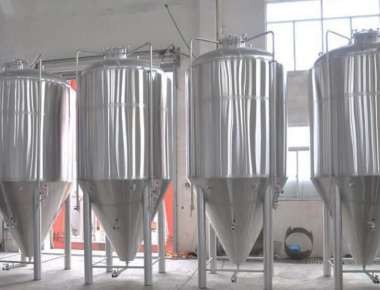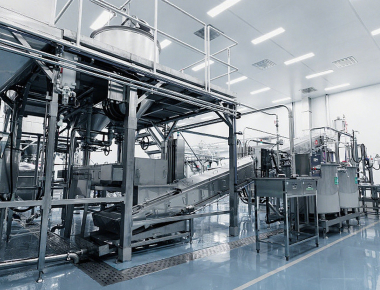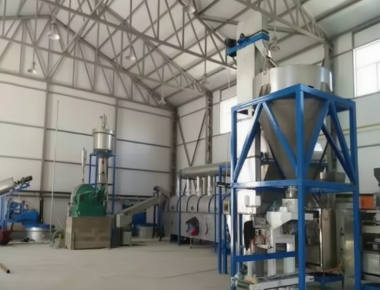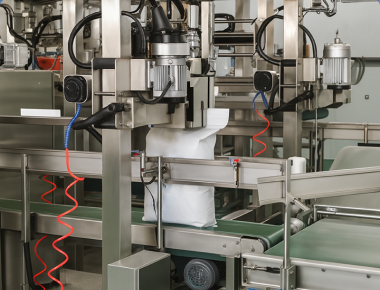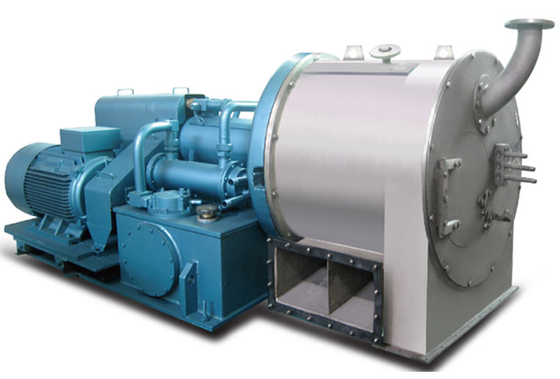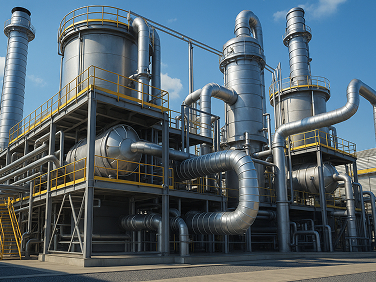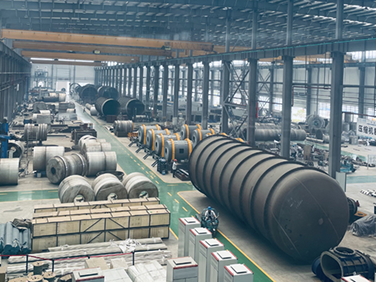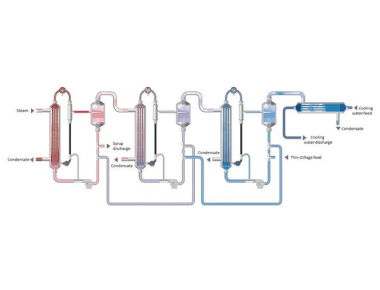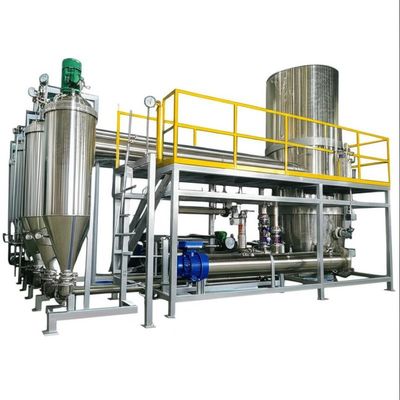Falling Film Multiple-Effect Evaporator Equipment for Effluent Treatment
A modular MEE falling/thin-film system for concentrating industrial effluents and enabling vacuum crystallization or water reuse. Optimized for steam economy, small footprint, and continuous, automated operation across paper-making wastewater, salt-making brines, and diverse industrial streams.
Lower Utilities
Each effect reuses the previous effect’s vapor as heating medium, drastically reducing fresh steam per kg water evaporated.
Clean Operation
Closed, vacuum operation with mirror-polished tubes mitigates fouling and simplifies CIP.
Modular & Maintainable
Skid sections and accessible piping shorten installation and maintenance windows.
Process Description — Parallel-Flow Example
Feed enters the first-effect circuit, mixes with circulating liquor, and is heated with live steam in heater H. In evaporator V1, water vaporizes at its boiling point. The liquor then passes to the lower-pressure second effect, where first-effect vapor becomes the heat source. This staged reuse continues across effects, sized per boiling point elevation, allowable ΔT, and duty—maximizing thermal efficiency and minimizing OPEX.
Structure
First/second/third-effect heaters & separators, pre-heaters, terminal condenser, vacuum package, feed/circulation/discharge/condensate pumps, and full instrumentation (vacuum, temperature, pressure, flow, level). Optional TVR or MVR modules can further reuse secondary vapors.
Key Characteristics
- Evaporation rate: 500 kg/h to 80 t/h.
- Materials: SS304 or SS316L (others on request).
- Vacuum, low-temperature operation: Short residence time; gentle to heat-sensitive components.
- Sanitary internals: Mirror-polished seamless tubes reduce scaling; easy CIP.
- High concentration ratio: Falling film hydrodynamics handle viscous feeds; short concentration time.
- Automation: PLC/HMI, interlocks, trending, recipe control.
- Custom process trains: Configured per feed chemistry, BPE, and client utilities.
Applications
Effluent concentration and reuse in paper-making, chemical & pharmaceutical, textile/dyeing, food & beverage, breweries, automotive; RO reject concentration; salt recovery via vacuum crystallization; ZLD pretreatment.
Typical Three-Effect Falling Film Evaporator — Specifications & Technical Parameters
| Parameter / Specifications | HP-3.0 | HP-4.5 | HP-6.0 | HP-9.0 | HP-12.0 | HP-15 | HP-20 | HP-24 | HP-30 | HP-50 |
|---|
| Evaporation capacity (kg/hr) | 3000 | 4500 | 6000 | 9000 | 12000 | 15000 | 20000 | 24000 | 30000 | 50000 |
| Consumption of raw steam (kg/hr) | 900 | 1350 | 1800 | 2700 | 3600 | 4500 | 4500 | 7200 | 9000 | 15000 |
| Vacuum degree of each effect | First Effect | 0 |
| Second Effect | 448 |
| (mmHg) | Third Effect | 640 |
| Evaporation temperature of each effect | First Effect | 99 |
| Second Effect | 76 |
| Third Effect | 53 |
| Steam pressure for evaporation (MPa) | 0.6–1.0 (Absolute pressure) |
| Solid content in feed (%) | 6–7 (example) |
| Solid content outlet (%) | 42–48 (example) |
Performance Comparison for Different Evaporators
| Item | Single-Effect Evaporator | Multi-Effect Evaporator | TVR Evaporator | MVR Evaporator |
|---|
| Energy consumption | Energy consumption is much higher than others; in theory, 1 ton water consumes 1 ton steam. | Comparatively energy-conserving versus single effect. | Based on traditional multi-effect with one more effect added; requires higher-pressure steam for driving. | The most energy-saving option for evaporators overall, but requires ~10–40 kW electric power for compressor. |
| Floor space | Small | Large | Large | Small |
| Energy sources | Steam & power; needs steam pipe network and boiler. | Steam & power; needs steam pipe network and boiler. | Steam & power; needs steam pipe network and high-pressure steam. | Electricity-driven; no large steam network needed, close-loop circulation system. |
| Automaticity | Semi-automatic | Full automatic operation, continuous evaporation | Full automatic operation, continuous evaporation | Full automatic operation, continuous evaporation |
Working Principle Chart
Our Production Site

 Your message must be between 20-3,000 characters!
Your message must be between 20-3,000 characters! Please check your E-mail!
Please check your E-mail!  Your message must be between 20-3,000 characters!
Your message must be between 20-3,000 characters! Please check your E-mail!
Please check your E-mail! 
